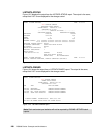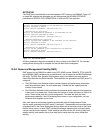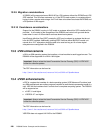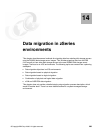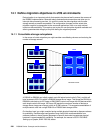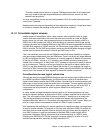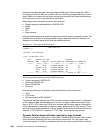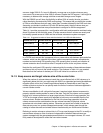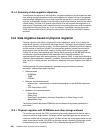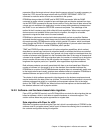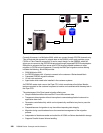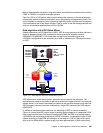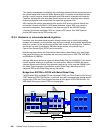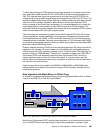
296 DS8000 Series: Concepts and Architecture
Note that some data set types cannot grow beyond 64K tracks. When coming from 3390-3
and staying with 50,085 tracks of a model 3 this limit of 64K tracks extent allocation is not an
issue. When you already work with larger volumes you are familiar with these considerations.
But it may be a surprise to you without this experience.
Data set types that can exploit more than 64K tracks are:
Physical sequential extended format, DSORG=PSE
VSAM
PDSE
HFS
Page data sets
Note that extended format data sets are required to reside on system-managed volumes. The
extended format attribute is usually assigned through a data class construct. Example 14-1
displays a list of data classes which have the extended attribute.
Example 14-1 Data Classes with EF attribute
DATA CLASS LIST
Command ===>
CDS Name : SYS1.DFSMS.SCDS
Enter Line Operators below:
LINE DATACLAS LAST TIME EXTENDED
OPERATOR NAME MODIFIED DATA SET NAME TYPE ADDRESSABILITY COMPACTION
---(1)---- --(2)--- --(25)--- -------(26)------- -----(27)----- ---(28)---
EXT 10:45 EXTENDED REQUIRED YES NO
EXTCOMP 07:30 EXTENDED REQUIRED YES YES
STRIPE 06:59 EXTENDED REQUIRED NO ----
XRCJ 07:09 EXTENDED REQUIRED NO ----
---------- -------- -------- ---------- ---------- BOTTOM OF DATA --------
Data set types that cannot grow beyond 64K tracks are:
Physical sequential, DSORG=PS
Partitioned, DSORG=PO
Direct, DSORG=DA
JES spool
Data set types that must be allocated in the first 64K tracks on the volume are:
VTOC
VTOC Index
JES spool without APAR OW49317
Furthermore, consider adjusting the VTOC size when moving to large volumes. It all depends
on the number of data sets allocated on the volume. You might consider defining the same
size for VTOC, VTOC Index, and VVDS for all volumes with the same capacity, although the
sizing requirements for database volumes are usually different than for TSO volumes. There
are some further recommendations in
Device Support Facilities User’s Guide and Reference,
Release 17
, GC35-0033-27, Appendix C. VTOC Index, and in the following sections.
Dynamic Parallel Access Volumes required for large volumes
Utilizing big volumes will require you to use dynamic Parallel Access Volumes (PAV) to allow
many concurrent accesses to the very same volume concurrently. On a big volume, with
9 times the capacity of a 3390-3, we see about 9 times as many concurrent I/Os as what we



